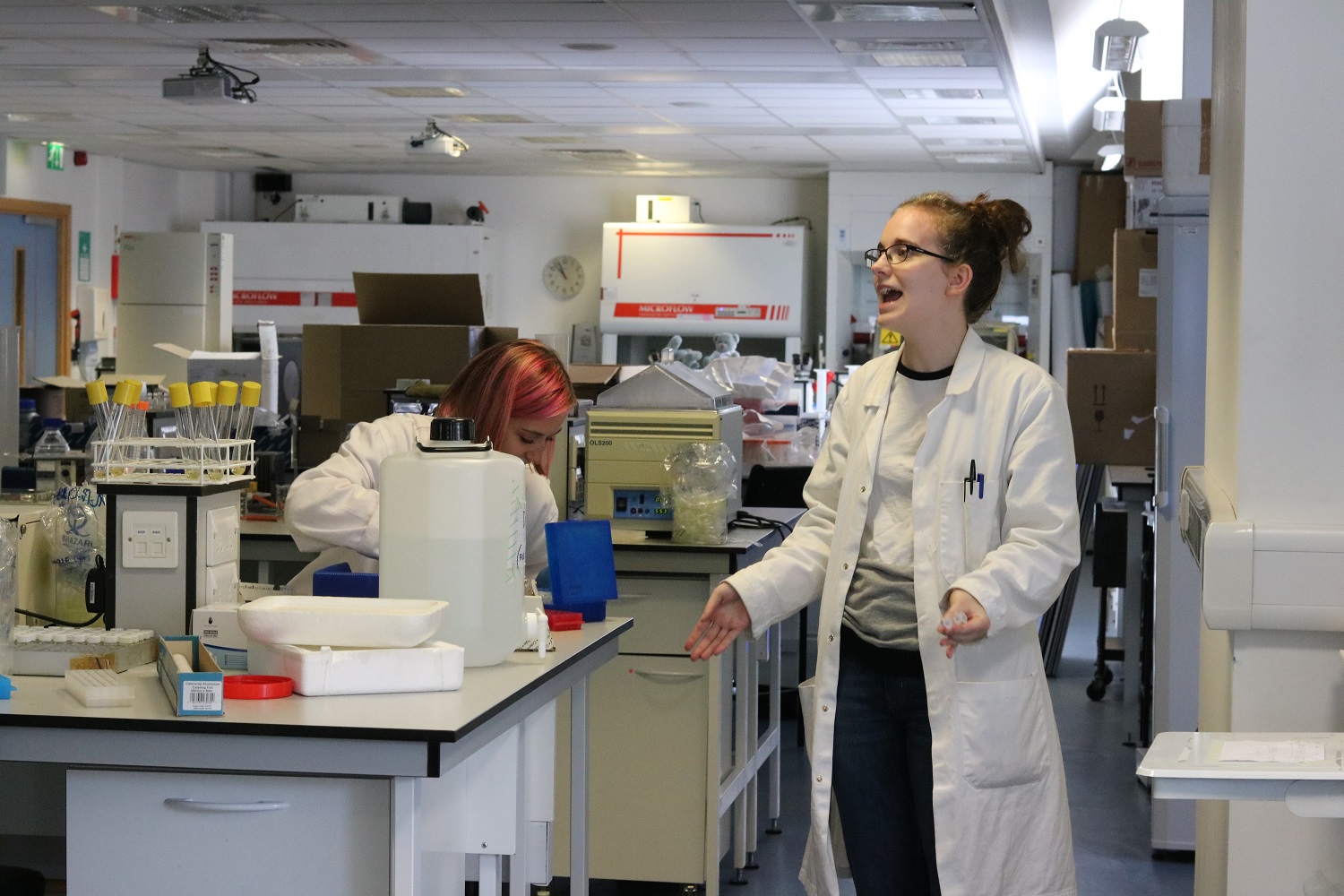Contents
Overview
Quorum sensing is used by many types of bacteria including Escherichia Coli (E. coli) and Campylobacter. The system naturally used by E. coli which involves the LsrR protein binding to and repressing the LsrA promoter (PlsrA) was utilised in this subproject. I constructed a plasmid with E. coli PlsrA followed by green fluorescent protein (GFP). This promoter should be turned off in the presence of the chromosomal encoded LsrR protein. When Autoinducer-2 (AI-2) is present, it binds to the LsrR protein and stops it from repressing PlsrA, allowing PlsrA to start transcription of GFP. I expected the results to show an increase in fluorescence when the plasmid with the PlsrA was in cells which make AI-2, such as DS941 E. coli, when compared to the same construct in cells that don’t make AI-2, such as DH5α E. coli. The results did not show an increase in fluorescence when comparing cells not exposed to AI-2 to cells exposed to AI-2.
Background
We designed our Campylobacter biosensor in the form of an AND-gate, which requires two positive inputs to yield an output signal. In our design one of these input signals would be the presence of the rare sugar xylulose from the Campylobacter cellular capsule. For the second input signal we intended to exploit the secretion of quorum-sensing molecules, AI-2, by Campylobacter. Our final biosensor device would only report an output signal of GFP fluorescence if both inputs (Xylulose AND AI-2) were present, which would reduce the possibility of false-positive results.
E. coli, and many other bacteria including Campylobacter, use quorum sensing to sense population density and coordinate gene expression dependent on this. Signalling molecules, such as AI-2, are constitutively produced by bacteria. AI-2 is a furanosyl borate dietser which can be recognised and produced by many gram-positive and gram-negative bacteria. AI-2 is a byproduct of the activated methyl cycle which is responsible for recycling S-Adenosyl-L-Methionine (SAM). During this cycle, the LuxS enzyme produces the precursor of AI-2, 4,5-Dihydroxy-2,3-Pentanedione (DPD). DPD then spontaneously becomes cyclic forming AI-2 [1]. Cyclic forms of DPD can be seen in figure 1.
AI-2 is then imported into bacteria by the LsrABCD transporter and is subsequently phosphorylated by LsrK kinase. Transcription of the lsrABCD operon is repressed by the LsrR repressor, a DNA binding protein that binds to PlsrA. However, phosphorylated AI-2 is bound by LsrR changing its confirmation so that LsrR no longer binds to DNA. Thus phosphorylated AI-2 induces expression of the lsrABCD operon [2].
Previous iGEM teams have used a similar process to detect AI-2 before. The Singapore 2008 iGEM team used a sequence from Rahnella Aqualitis which was characterised by researchers in 2000 [3]. This promoter was tested by the Tokyo 2011 iGEM team who discovered it did not work as intended. They then redesigned the promotor using a sequence from another paper [4]. However, further research found that the Tokyo team missed out the last 14 bases of the promoter sequence which are important for LsrR binding. Therefore, the same sequence that the Tokyo team used was ordered from IDT along with that sequence with the 14 based included on so that the whole LsrR binding site could be tested.
Aims
- Transform PlsrA, PlsrA+14, and LsrR-LsrA intergenic region promoters into plasmids in E. coli.
- Test these plasmids within two different cells; DH5α and DS941. DH5α does not make AI-2 because there is a frameshift mutation in the LuxS gene [5] and DS941 does make AI-2. This allows for comparison of the constructs when AI-2 is present and when it is not.
Materials and Methods
Condition set up
Sample preparation
- 1
- 2
- 3
Results and Discussion
Outlook
References
- ↑ Vendeville, A., Winzer, K., Heurlier, K., Tang, C. and Hardie, K. (2005). Making 'sense' of metabolism: autoinducer-2, LUXS and pathogenic bacteria. Nature Reviews Microbiology, 3(5), pp.383-396.
- ↑ Rutherford, S. and Bassler, B. (2012). Bacterial Quorum Sensing: Its Role in Virulence and Possibilities for Its Control. Cold Spring Harbor Perspectives in Medicine, 2(11), pp.a012427-a012427.
- ↑ Seo, J., Song, K., Jang, K., Kim, C., Jung, B. and Rhee, S. (2000). Molecular cloning of a gene encoding the thermoactive levansucrase from Rahnella aquatilis and its growth phase-dependent expression in Escherichia coli. Journal of Biotechnology, 81(1), pp.63-72.
- ↑ Xue, T., Zhao, L., Sun, H., Zhou, X. and Sun, B. (2009). LsrR-binding site recognition and regulatory characteristics in Escherichia coli AI-2 quorum sensing. Cell Research, 19(11), pp.1258-1268.
- ↑ Wang, L., Forsyth, M., Hullo, M., Merritt, J. and Sperandio, V. (2017). WikiGenes - Collaborative Publishing. [online] WikiGenes - Collaborative Publishing. Available at: https://www.wikigenes.org/e/gene/e/947168.html [Accessed 17 Oct. 2017].



